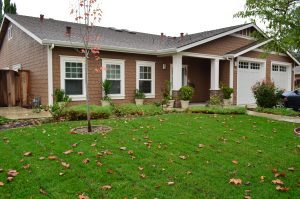Repealing Article 34

What is Article 34?
In 1950, residents in Eureka, CA collected votes to prevent the building of public housing funded by the federal government. During that same year the Supreme Court ruled the building couldn’t be prevented by a referendum. The California Real Estate Association started an initiative to require that the public have a vote in the building of public housing. The initiative was successful and Article 34 was ruled into law. Article 34 requires the majority of voters in a city or county to approve low-income housing projects.
For the purpose of Article 34, low-income individuals are defined as people who lack the level of income necessary to live in safe and sanitary housing without financial assistance. The Department of Housing and Community Development, as well as the U.S. Department of Housing and Urban Development, establish the income limits that determine low income. Low income is considered to be 80% of the state non-metropolitan median family income (MFI).
Not in My Backyard (NIMBY)
In the late 1970s residents argued against the building of harmful environmental structures in their communities. Used to commend the efforts against the building of such structures, the term ‘Not in My Backyard,’ or NIMBY, became popular. In this day and age, the term is used more in regard to anything that has the potential to lower the value of someone’s property. While some NIMBY groups argue against the development of structures that might block views, others argue against the addition of establishments that house low-income or marginalized groups, such as adults with developmental disabilities.
How does Article 34 impact you?
Within 20 years of Article 34 passing, about 15,000 units of public housing were denied. The United States Interagency Council on Homelessness reported that 161,548 people experience homelessness in California, as of January 2020. This number is far beyond any other state, just short of being twice as many as New York. Without Community Care Facilities like LSA and other service providers, thousands of adults with developmental disabilities could be forced to live on the street. Although NIMBY groups oppose the addition of care homes in their neighborhoods, these adults would otherwise contribute to the ever growing homeless population. With Article 34 in place and NIMBY groups able to influence those who vote on the building of low-income housing, the development of homes for developmentally disabled adults is threatened. If the constituents of a city or county vote against the building of low-income housing for this vulnerable population, these adults would be forced to endure challenging living conditions, with families who are unable to care for them, or face homelessness.
Impact of LSA Homes in Your Neighborhood
Purchasing or leasing homes for adults with developmental disabilities not only contributes to the economy, but can help diversify a neighborhood and prevent more individuals from being added to the growing homeless population. Individuals with developmental disabilities have a fundamental right to live in and be included in the community. Support LSA and the developmentally disabled community by encouraging the repeal of Article 34. Send an email to your local representative in support of repealing Article 34 by visiting California YIMBY.
Resources:
Do You Like These Blogs & Updates?
- Sign up for our e-newsletter!
- Follow us on social media
